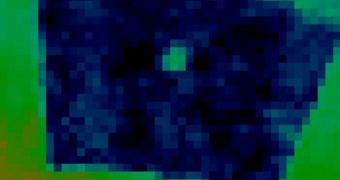An extrasolar planet about seven times the mass of Jupiter surprised astronomers recently, when it revealed that it featured a type of atmospheric composition that no one expected it to sport.
This particular celestial body is very important to experts because it is one of the very few exoplanets that can be photographed directly using advanced telescopes.
Most other planets need to be created via computer models, or by an artist's rendition. But HR 8799b can be imaged directly, as shown by evidence gathered in 2008.
But now scientists say that the body may in fact be cloudier than they initially suspected. Astronomers figured from the get-go that they were dealing with an abnormal planet, but they failed to realize the exact extent to which the celestial object differed from others.
Initial calculations had suggested that the atmosphere around HR 8799b should have contained at least moderate amounts of the hydrocarbon methane, but the chemical was not identified.
However, new evidence is mounting to show that the surface of the planet may in fact be hotter than previously established. Researchers also say that the atmosphere may be cloudier than estimated.
“We are at a point where not only can we directly image planets around other stars, but we can begin to study the properties of their atmospheres in detail,” explains Brendan Bowler.
“Direct spectroscopy of exoplanets is the future of this field,” adds the expert in a statement. He is a graduate study at the University of Hawaii, and also the lead author of the new study.
The work will be published in an upcoming issue of the top-rated Astrophysical Journal, Space reports.
“Direct studies of extrasolar planets are just in their infancy. But even at this early stage, we are learning they are a different beast than objects we have known about previously,” adds Michael Liu.
He is also based at UH, and was a coauthor of the investigation. The scientist says that the exoplanet is located some130 light-years from Earth. More than 450 such bodies have been identified thus far.
“Adaptive optics systems on Keck and other large ground-based telescopes make sharper images than even the Hubble Space Telescope,” adds UH expert and study coauthor Trent Dupuy.
“With adaptive optics, we are learning an incredible amount about objects that are smaller than the lowest-mass stars and larger than the most massive gas-giant planets in our solar system,” he adds.

 14 DAY TRIAL //
14 DAY TRIAL //